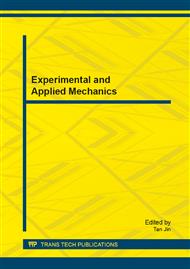p.12
p.19
p.25
p.33
p.41
p.47
p.53
p.60
p.66
Creep Analysis of Eccentric Compression RC Columns
Abstract:
Based on the elastic-creep theory, a series of expressions that describe stress-strain increment and corresponding recurrence formula of reinforcement and concrete are derived from some basic formulas for eccentric compression RC columns. The stress-strains changing process considering repeated loading is calculated through numerical method. The effect of a long-time load on creep behavior of eccentric compression RC columns and stress process after unloading are studied. Many factors are considered in the study, which includes the eccentricity, the reinforcement ratio, the loading age and the duration of loading. Adopting this methodology may simplify the complexity of creep analyses and provide some references for the design of the structures.
Info:
Periodical:
Pages:
41-46
Citation:
Online since:
February 2014
Authors:
Keywords:
Price:
Сopyright:
© 2014 Trans Tech Publications Ltd. All Rights Reserved
Share:
Citation:


